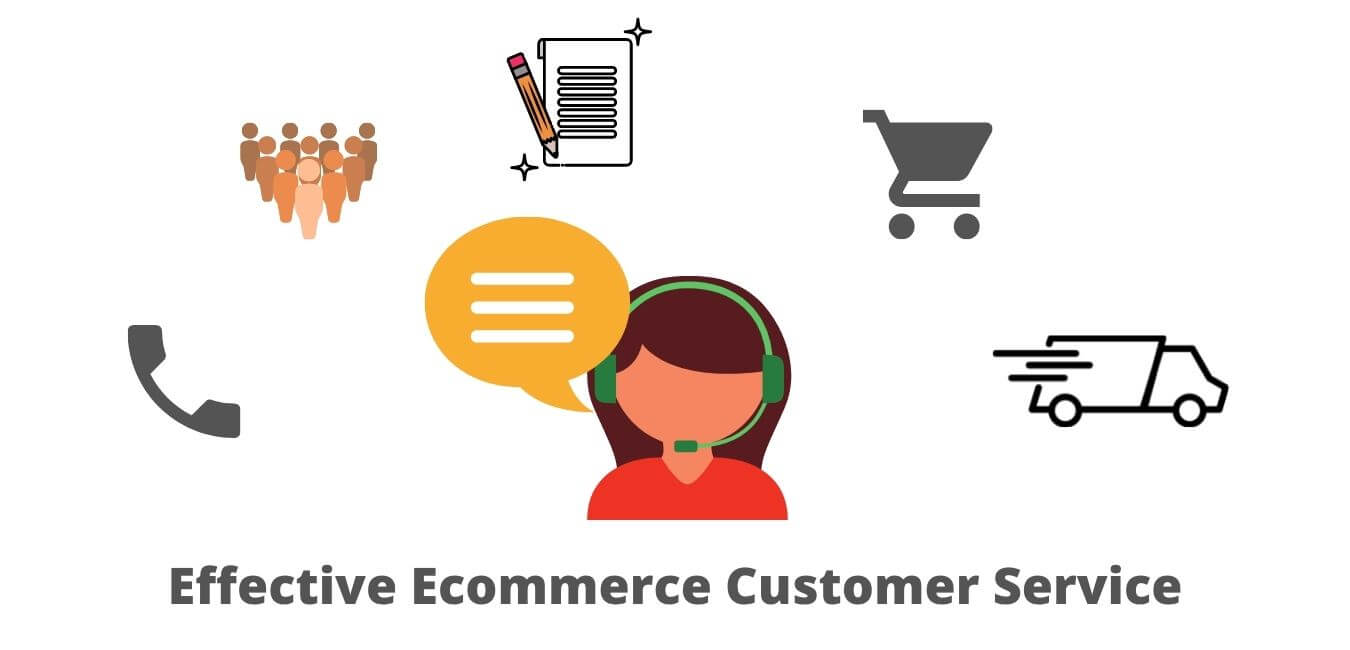Best Practices for Effective Ecommerce Customer Service
The customer service industry is a competitive space, and with the rise of eCommerce, it has become even more cutthroat. With so many customers coming in contact with your business regularly, it's important to do everything you can for them to have an excellent experience every time they interact with you. But what are some best practices for providing customer service in an increasingly digital world? Here we have a few that will help your business grow and succeed.

Be There When They Need You
Customers often feel lost or ignored when they see eCommerce stores that don't provide any way for them to get in touch with them. Understandably, you may want to lay low on social media, but your customers need to know how to contact you. They should be able to get in touch via phone, email, live chat, and more.
Offer Live Chat and Email Support
Customers love live chat because it is fast, responsive, efficient, and effective. Failing to offer live support not only leaves customers in the dark about your product line or other concerns but also shows them that you don't care enough to provide a quick response.
Email support also works well because it still offers a quick response, but it is more private than talking to someone in front of other customers. Customers will appreciate the privacy as they won't feel like you are sharing their issues with others, and it allows them time to think about what they want to say without being on the spot during a live chat.
Some customers might not want to take any kind of action until they have spoken to someone in person, which is where a telephone number comes into play. Customers appreciate knowing that you're available if they need help and are willing to give up their time to answer questions. However, many customers may not feel comfortable talking on the phone to a customer service representative they don't know. Providing an alternative method of contact could be the deciding factor in whether or not your customers call you.
Be Fast With Your Responses
One of the key ways a business can provide solid customer service is by responding quickly. Customers often complain about not getting a reply from customer support services or having their support tickets sit unanswered for days at a time while they wait for help. No matter what kind of email program you use or what type of online chat function your website offers, make sure that those who need help are getting replies fast enough so it is no inconvenience for them - no more than 30 minutes for a quick reply.
Be Helpful and Understanding
Customer service agents should be knowledgeable, helpful, and understanding of your customers' needs. They should go above and beyond to find the information they are looking for, whether it is pricing information, order status, or something else related to their experience with your company. To achieve this, customer service representatives must have access to good communication skills as well as equally good product knowledge so that they can answer questions in a way that doesn't make the customer feel ignorant or stupid. If there isn't already someone on staff with the right training or qualifications to fulfill these roles, invest in some outside help (virtual assistants are great for this). When you're getting ready to hire new personnel, make customer service representatives a priority. If you expect to take in a lot of orders online, then make sure that the people who handle these interactions have solid training and work with a representative from your sales team, as well. This creates redundancy so that even if one customer rep goes on vacation or quits unexpectedly, there are others available who can pick up the slack.
Get Proactive
Automated responses are great on their own, but they only go so far. To really delight customers, take things a step further and contact them proactively when you spot solutions to common problems that they may encounter. For example, if you notice someone is purchasing the same item as another customer who then left negative feedback about quality issues, reach out to your first customer with suggestions for product upgrades or similar items. This could potentially save you from a future headache with that customer (and hopefully make them happier than ever).
Offer Surprises
A little bit of friendly spontaneity goes a long way when dealing with online customers who have come to expect predictability from social media interactions. If someone reaches out on Twitter because there's been a minor hiccup with their order, for example, you might consider offering a discount code or a freebie if they'd like to reorder. Other times it can be as simple as sending a quick email to acknowledge someone's request and share an update.
Think Outside The Box
Believe it or not, some companies are still looking for ways to better connect with social media followers on Facebook. With its already built-in eCommerce features and 'frictionless sharing' options (which allow customers to automatically post product reviews, photos of purchases, and other activity directly from your site), there's no reason not to give Facebook another try for customer service. The same goes for Pinterest, which has just announced that buyers will soon be able to receive status updates from merchants who favor the platform for eCommerce updates.
Encourage Reviews
In this age of social media and user-generated content, customer reviews have become increasingly important to earning online trust. Once a major obstacle for smaller companies without a brick-and-mortar footprint, sites like Yelp have provided small businesses with the opportunity to connect with new customers on many levels, including customer service. Even if you don't manage to resolve an issue or exchange directly through these channels, simply responding with your resolution plan can go a long way toward earning valuable positive feedback and future business.
Customer service is a vital part of the eCommerce shopping experience, and many online shoppers will simply choose to do business elsewhere if your website provides poor customer service. 88% of consumers say that they will pay more for better customer service! To put it simply: You're only as successful as you are responsive.
Conclusion
Customers should be able to find the answers they need, quickly and easily. If you are selling products online, it’s important that your customers can find what they want without hassle. The best way to do this is simple; provide a customer service section on your website with clear guidelines for how people can get help if needed. This will allow them to ask questions about their purchase or any problems they may have encountered in the past before contacting customer support by phone or email. You don't want someone who has already spent money with you feeling like all hope is lost when something goes wrong - so make sure there's an easy solution at hand!



